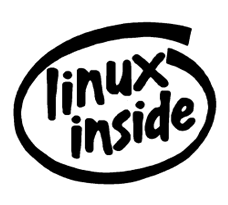A real Linux kernel will be added as part of windows subsystem for Linux (WSL) in the forthcoming version of Windows 10.
The time the news of bash on windows was shared by Microsoft and they brought Linux into Windows as windows subsystem for Linux (also known as WSL), not many will think that the next step was to introduce the real Linux kernel into windows operating system.
That is what Microsoft has just done. It was among the announcements at the Microsoft Build 2019 Conference that they will be introducing the real Linux kernel to Windows 10 for WSL
Windows Subsystem for Linux (WSL) is a Linux kernel compatibility layer for Windows. It enables Linux programs (mainly the command line ones) to run inside Windows. The feature can also be called bash on Windows.
Bash can be installed on Windows through Ubuntu, Kali Linux, and OpenSUSE. These Linux distributions are available in Windows 10 Store. The WSL allows you to natively run the Linux commands on Windows, Instead of a slow virtual machine.
In WSL 2, the Linux kernel compatibility layer has been replaced by the real Linux kernel. So now if you use WSL, you’ll be using the real Linux kernel 4.9.
This will be the first time a Linux kernel is shipped with Windows, which is evident to how much Microsoft loves Linux. The advantages of real Linux kernel in WSL 2
It has been optimized for size and performance to give an amazing Linux experience on Windows. We will service this Linux kernel through Windows updates, which means the latest security fixes and kernel improvements will be gotten without needing to manage it yourself.
The inclusion of real Linux kernel will boost the file-system I/O and system calls. The specifically optimized Linux kernel makes WSL 2 faster than WSL 1. In certain tasks like unpacking a tarball, WSL 2 was 20x faster than WSL 1 and around 5x faster in using Git clone, npm install.
WSL 2 also allows Windows to run Docker containers natively. You probably already know that Docker and Linux containers are the backbones of the IT industry these days and most of the software deployments take advantage of the Linux containers.
The Linux kernel will get security fixes, kernel improvements, and other updates through Windows updates. Hah! Does this mean Linux kernel will start upgrading in the middle of work like Windows updates? That remains to be seen.
When is WSL 2 releasing? Which Linux distros are available via WSL 2?
WSL 2 will be available through Windows insider program by the end of June. Windows insider program is sort of a beta program for early adopters and developers to try out the upcoming Windows features before its final release. There is no date for the general public on the release of WSL 2. Canonical has announced the support for WSL 2 meaning you would be able to use Ubuntu through WSL 2. Collaboration with Microsoft enables us to certify Ubuntu on WSL, including Docker containers, Kubernetes, and snaps.
By bringing Linux kernel to Windows 10 desktop, programmers and software developers will be able to use Linux for setting up programming environments and use tools like Docker for deployment. They won’t have to leave the Windows ecosystem or use a virtual machine or log in to a remote Linux system through Putty or other SSH clients.
In the coming years, a significant population of the future generation of programmers won’t even bother to try Linux desktop because they’ll get everything right in their systems that come with pre-installed with Windows. Linux kernel will continue to grow in the IT infrastructure, thanks to the efforts of Linux Foundation backed by the enterprise giants for their own interests.
The desktop Linux will, unfortunately, see a decline. The Linux Foundation already doesn’t care about the desktop Linux. Out of the millions it gets, literally, nothing goes for the development of desktop Linux (as far as I know). Linux Foundation doesn’t make any effort to support desktop Linux probably because it doesn’t generate any money.
Microsoft loves Linux. Microsoft loves Open Source. Its love is so deep that it open sourced the magnificent Windows calculator so that all of us Linux users could run this marvel of technology. But when it comes to bringing commercial products like Microsoft Office to Linux, Microsoft suddenly recalls that there is not enough demand for MS Office on Linux.
Not enough demand? So, were people signing petitions or holding yellow jacket protests for open sourcing Windows calculator? Microsoft is one of the biggest contributors to open source project on GitHub (platform now owned by Microsoft). But if you look at their projects, youll notice that almost all of the Microsofts open source products are aimed at programmers and software developers.
This is not love, Microsoft and Linux. This is merely a relationship of convenience.
Source: The HackerNews


